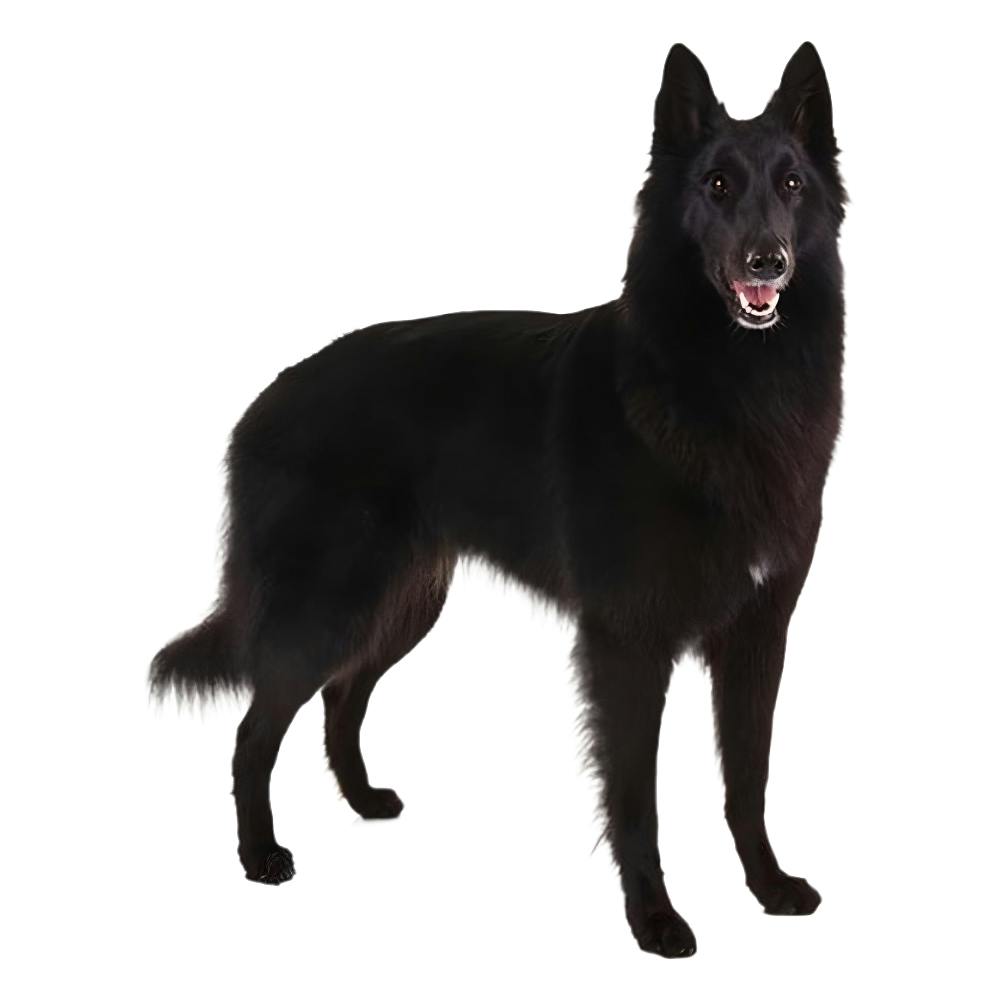
Belgian Sheepdog
The Belgian Sheepdog, also known as the Belgian Shepherd or Groenendael, is one of the four varieties of sheepdogs native to Belgium. These varieties include the Groenendael, Laekenois, Tervuren, and Malinois, all named after the areas in Belgium from which they originated. The breed's roots trace back to the 1800s when they were used for herding and guarding livestock. They were prized for their intelligence, strength, and versatility, making them ideal working dogs. In the late 19th century, a professor of the Belgian School of Veterinary Sciences named Adolphe Reul began to classify these sheepdogs into distinct types, leading to the recognition of the Belgian Sheepdog as a specific breed. Over the years, Belgian Sheepdogs have served in various roles including police dogs, search and rescue dogs, and even war dogs during both World Wars. Today, they are popular in dog sports, such as obedience, agility, and herding trials, and are also treasured as companion animals.
- Origin
- Belgium
- Alternate Names
- Belgian Shepherd, Groenendael, Chien de Berger Belge
- Life Expectancy
- 12-14 years
- Average Male Height
- 24-26 inches
- Average Female Height
- 22-24 inches
- Average Male Weight
- 55-75 pounds
- Average Female Weight
- 45-60 pounds
- Coat Length
- Medium
- Coat Type
- Double
- Coat Colors
- Black, Brindle, Fawn & Brindle, Gray & Black, Mahogany & Black, Silver & Black, Cream & Black, Fawn & Liver, Mahogany & Liver
- Coat Pattern
- Black Points, White Markings, Black Markings, Black mask
Genetic Predispositions and Health
Belgian Groenendaels can be affected by cardiomyopathy (dilated), cataracts, cerebellar ataxia (spongy degeneration), congenital nystagmus, ectodermal defect, elbow dysplasia, elbow dysplasia (fragmented coronoid process), epilepsy, gastric carcinoma, Gracilis or semitendinosus myopathy, hip dysplasia, hypothyroidism, hypotrichosis, macroblepharon, mucopolysaccharidosis VII, muscular dystrophy, optic nerve hypoplasia and micropapilla, pannus, patellar luxation, persistent pupillary membranes, prognathism, progressive retinal atrophy, retinal dysplasia, subaortic stenosis, and vitiligo. Genetic testing is recommended, including for the following additional conditions: hyperuricosuria, degenerative myelopathy, and progressive rod-cone degeneration.
Personality and Behavior
Belgian Sheepdogs are known for their intelligence, energy, and protective nature. They are highly trainable and excel at tasks that challenge them both physically and mentally. Due to their herding heritage, they can be wary of strangers but are usually friendly and affectionate with their families.
They are high-energy dogs that require plenty of exercise and mental stimulation. Without it, they may become bored and exhibit destructive behaviors. Because of their protective nature, early socialization and training are important to help them differentiate between threats and non-threats.
Despite their working background, Belgian Sheepdogs can also adapt to family life. They are typically good with children and other pets if properly introduced and socialized. However, their high energy and exercise needs make them a better fit for active individuals or families.
Fun Facts
In the late 1800s, efforts were made to propagate a "Belgian" for nationalistic purposed, resulting in the Club du Chien de Berger Belge (Belgian Shepherd Club), a group that eventually fostered the rise of the Belgian Sheepdog.
References
https://www.akc.org/dog-breeds/belgian-sheepdog/
https://www.pawprintgenetics.com/products/breeds/117/
https://www.petmd.com/dog/breeds/c_dg_belgian_sheepdog